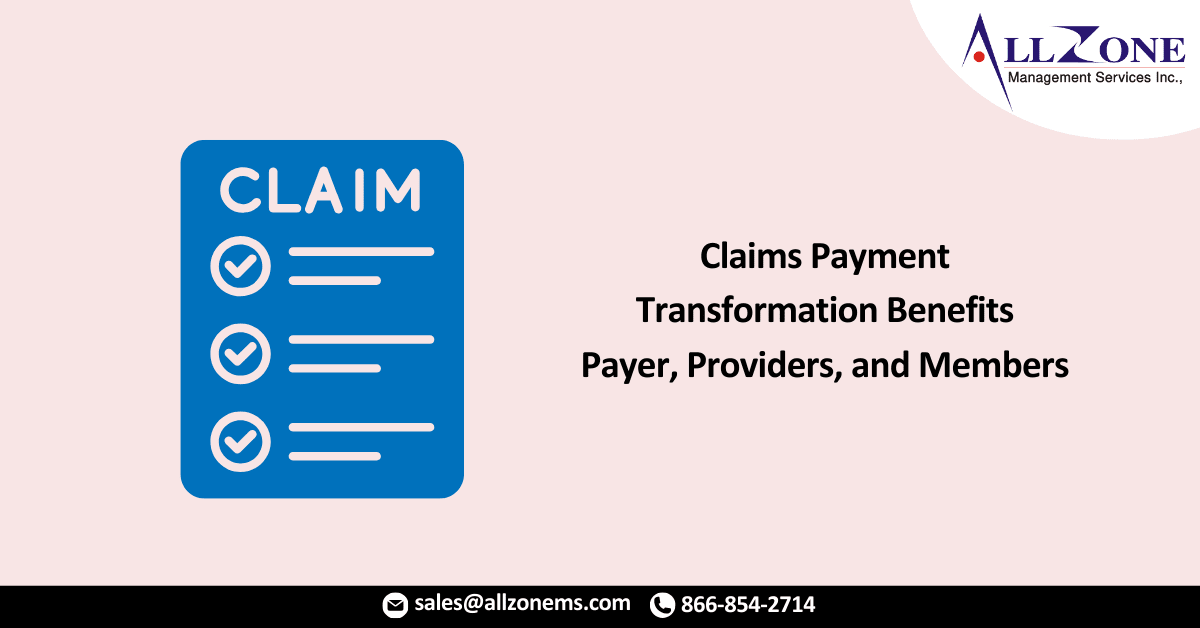Payers, providers, and members can all benefit from transforming the manual and patchwork claims payment process to a digital environment that also automates claims data delivery.
Payers, providers, and members are all central to the healthcare experience, working together to create a seamless, coordinated encounter from registration and the clinical visit to claims payment and patient bill pay. However, these stakeholders too often fall short of achieving a high-quality experience for all.
There are several disconnects between payers, providers, and members. Chief among those disconnects is the claims payment process.
The current state of claims payment
There were 1.1 billion claims payments made in 2020, representing an 18 percent increase over the previous year, according to the latest data from the Council for Affordable Quality Healthcare, Inc. (CAQH). Slightly more of these payments (71 percent versus 70 percent) were made electronically via electronic funds transfer (EFT) or automated clearing house (ACH).
Despite high adoption of EFT/ACH, the medical industry spent 28 percent more on the claims payment process in 2020 compared to the previous year. Medical stakeholders spent more on claims payments last year because of the larger volume of claims and a simultaneous increase in manual payments (made by phone, fax, email, or mail), CAQH explained.
Manual claims payment is a major source of contention among payers, providers, and members. Paper checks and other forms of manual claims payment are slow to process and are prone to errors because of their manual nature. A slow payment reconciliation process trickles down to the member experience as patients wait on claims payments to clear before paying their medical bills.
Electronic claims payment represents a big opportunity for payers to streamline the process for all of those involved.
“The majority of payers are looking to lower the costs associated with checks and minimize that volume and do that in a way that bridges the gap between the payer, the provider, and the member,” explains Leah Silver, Senior Director of Business Solutions at Zelis.
Fortunately, the age of technology is here. Solutions are working on an electronic claims payment process that benefits payers and providers while optimizing the member experience.
Future of claims payment hinges on technology
The future lies with the advancement of technology, which will be able to bridge the payer, provider, and member to streamline the claims payment process, Silver predicts.
“How do payers do that,” Silver asks. “They do that through technology that gives members access to their EOBs, claim information, and the ability to chat on-demand with payers via technology that they’re used to today, like their smartphones or an app.”
“Putting the technology in the member’s hand to be able to have an understanding of what’s going on with their healthcare claims today and make payments is going to be important. So partnering with the right solution to be able to support that is key.”
The EFT or ACH offerings that most major payers have today may not be enough to accommodate the full claims payment experience. The providers who are eligible for electronic claims payment today—usually larger, higher volume providers—must still have their hands in the process to ensure electronic transfer of reimbursement from each payer they work with. Providers and payers must also still work together to coordinate exchange of key claims information, such as 835s or electronic remittance advice, to complete the claims process and bill patients.
“Automating payment and data delivery ensures that providers are hands-off in the process,” Silver says. “Payers can do that in a number of ways, either through expanding some of the core components of the existing EFT that the payer is doing today or finding the right partner to be able to supplement what’s in place in order to drive higher automation in electronic adoption within the payer landscape.”
An integrated solution benefits all
A coordinated or integrated solution that automates claims payment and claims data delivery improves the provider’s experience with payers while elevating how the member interacts with the financial leg of their healthcare journey. With the technology, payers can reduce friction across the key stakeholders to streamline the claims payment process and beyond.
Integrated solutions aggregate payers under a single platform so providers can access electronic claims payment options across the payers they contract with and tap into a single source of claims data. The solutions also support large provider networks so payers can easily implement digital reimbursement options at scale.
A coordinated approach to full claims payment automation can also impact the member experience by offering full transparency into the financial component of healthcare—something that has become important to members who owe more under popular high-deductible health plans.
This type of technology for claims payment is the first step towards the future of reimbursement and member experience, Silver says. On the provider side, it enables innovative payment methods, such as instant banking or payment through an app like Venmo. For payers, it brings the industry closer to real-time adjudication and payment. All of this can also live within the palm of a member’s hand.
“We don’t want to lag. We want to take advantage of the tech we have in place, the financial capabilities that are now in the market, and keep pace with modern times,” Silver states. “We, as healthcare executives or payers, have to make sure that we keep aligned with that so that we don’t fall into this antiquated process like some of the other markets outside of healthcare have.”
The risk of not modernizing claims payments is too high, Silver adds. Payers, providers, and members are already facing rising costs and lagging financial experience, the latter of which can negatively impact net promoter scores and other public measures of satisfaction.
But together, the three key stakeholders can lower costs and get the financial experience they want using the right technology solution.
For More Information: https://healthpayerintelligence.com/news/claims-payment-transformation-benefits-payer-providers-and-members

